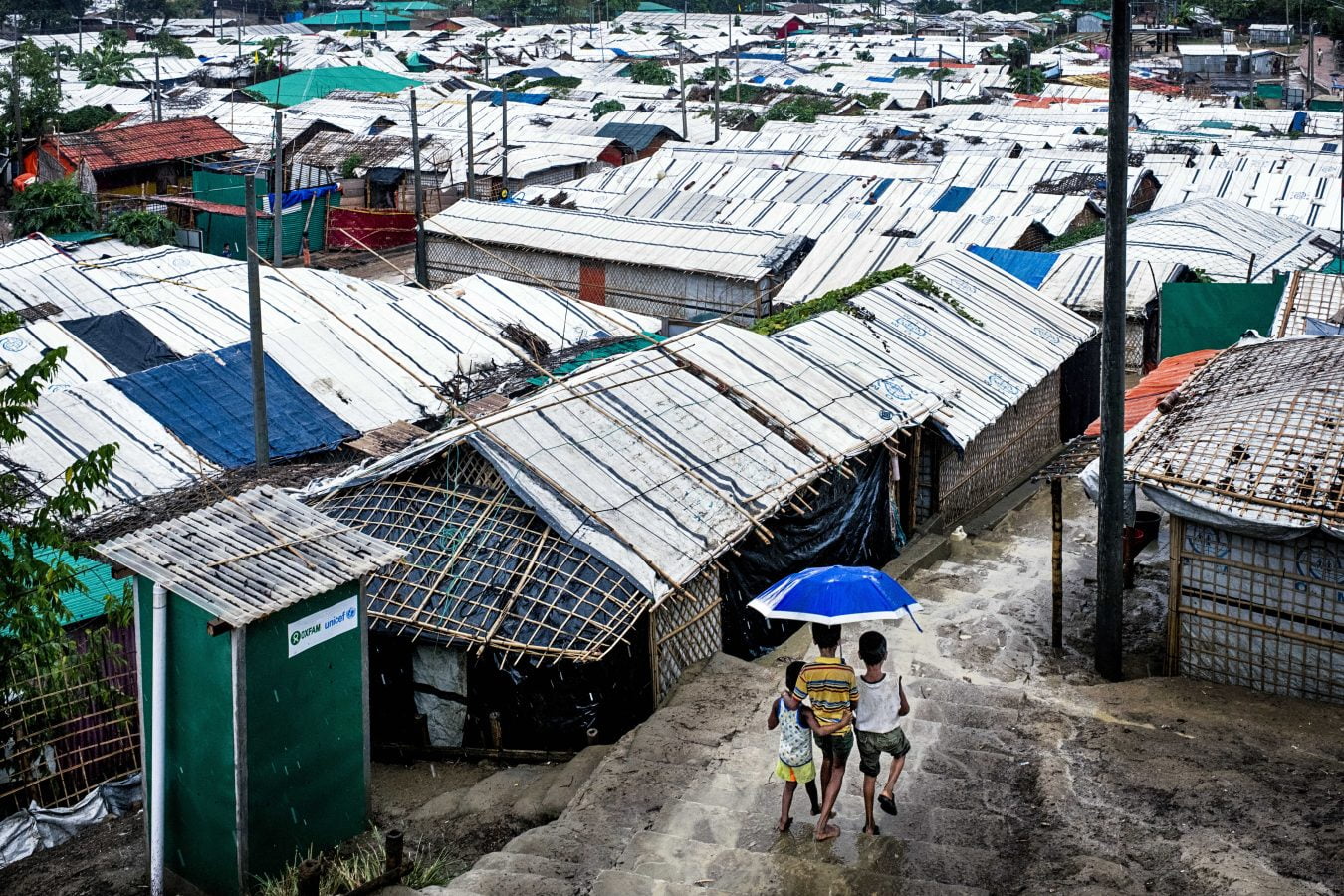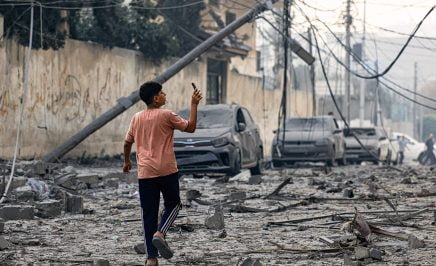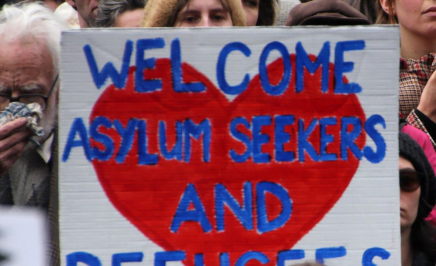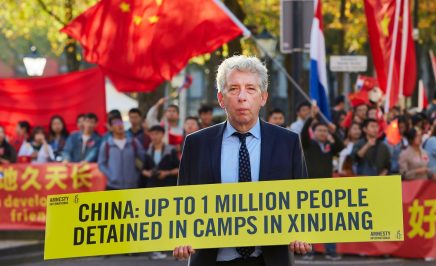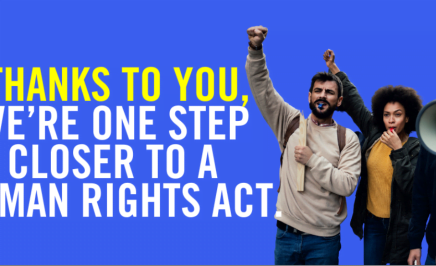The Rohingya people have been persecuted for decades by the Myanmar military as an ethnic minority, with a renewed wave of violence in 2017 causing nearly one million people to flee to neighbouring Bangladesh. The United States in 2022 declared the Myanmar military had perpetrated a genocide against the Rohingya during the 2017 atrocities. They aren’t recognised by their own government and are stuck in limbo.
The homes they left behind have been destroyed, and the Bangladesh government is signalling that they want them to return to Myanmar. The vast majority of Myanmar’s Rohingya have no legal status, having been effectively deprived of a nationality as a result of discriminatory laws, policies and practices.
The vast majority of Rohingya refugees have fled across the border into Bangladesh, settling into the Cox’s Bazar district. Cox’s Bazar shares a border with Myanmar’s Rakhine State where the Rohingya primarily reside. Refugees are settled across multiple refugee camps within Cox’s Bazar, with no investment in their living conditions or education.
The conditions in the camp
In October 2023, Amnesty staff travelled to Bangladesh alongside Médecins Sans Frontières and UNHCR to the world’s largest refugee camp in Cox’s Bazar. The Rohingya shared with them accounts of Myanmar security forces carrying out mass killings, torture, rape and burning of entire villages. The conditions in the camp are inhumane. With refugees not allowed to leave the fences that surround them, they’re trapped inside with limited food, water and electricity.
There are close to one million people living in Cox’s Bazar, with around 800,000 of those having been there for at least 6 years. With over 200,000 families spread across 34 camps in just 24km2, it’s one of the most densely populated parts of the world. There are an average of 4-5 people per household, with families living in makeshift bamboo and tarp shelters that were designed to be a temporary housing solution.
The huts have become semi-permanent homes, providing little protection against heat, cold and frequent extreme weather events. Without plumbing, families are forced to collect water by hand, often travelling long distances to reach a water pump. Toilets are communal and provide no privacy, putting women and children at risk, particularly at night as there’s almost no lighting and a constant danger of being attacked.
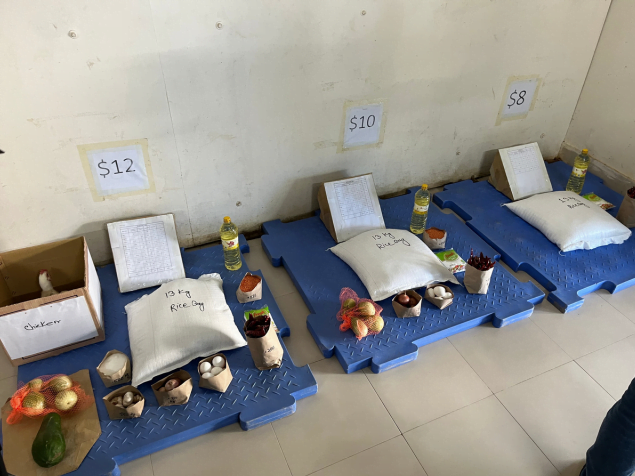
As they’re not allowed to work, refugees are wholly dependent on foreign aid for food supplies. They’re provided with a ration of just US$8 a month per person, which allows them to purchase only oil, rice, salt and chillies. These meagre rations have also been decreasing due to a lack of funding, forcing refugees to live off 27 cents per day. Not only does this severely impact their mental health, but also physical health, as the food they purchase isn’t up to the minimum standard of nutrition for a person.
A lot of the inhabitants are born in the camps, having lived their entire lives inside the confines of the fences that surround them. With no opportunity for secondary education or work, refugees feel like they’ve been discarded by the international community and are simply wasting away.
“You wouldn’t allow it for yourself… and yet these people are supposed to accept it.”
Craig Foster
As a result, the community, particularly young people, are turning to crime, in part due to being unable to afford necessities, but also due to not having any playgrounds or sporting fields to spend time in. The camp system has led to a dramatic increase in domestic violence and conflict more generally in society. People have to stay awake at night and act as security guards to protect the little possessions they have.
There’s an active incentive for people to have children, as it increases the allowance they receive per month, but that in turn has increased pressure in the camps. With already limited supplies, there’s no guarantee of prosperity for these children.
An immense strain on the already short-staffed medical system is causing a plethora of health issues in the population. Underlying malnutrition is a major cause of a lot of the health problems in the camp, especially for pregnant women who are coming in with nutritional deficiencies which leads to the birth of children with a plethora of deficiencies. To compound this problem there are a multitude of outbreaks in the camp, including diphtheria, cholera, measles, COVID-19, scabies and dengue.
Children will only “attain a fifth of their potential: cognitively, behaviourally, emotionally, developmentally and physically. It’s so urgent, but you’re not going to see the effects for a generation.”
Jenifer Leaf Jaeger – MSF
Lived experience: Life for the Rohingya in Cox’s Bazar
The Rohingya refugees in Cox’s Bazar have faced hardship after hardship, from persecution in their homeland, to resettlement, to fires in refugee camps. They’ve met every challenge with resilience and courage and it’s vital to share and uplift their stories.
Zia
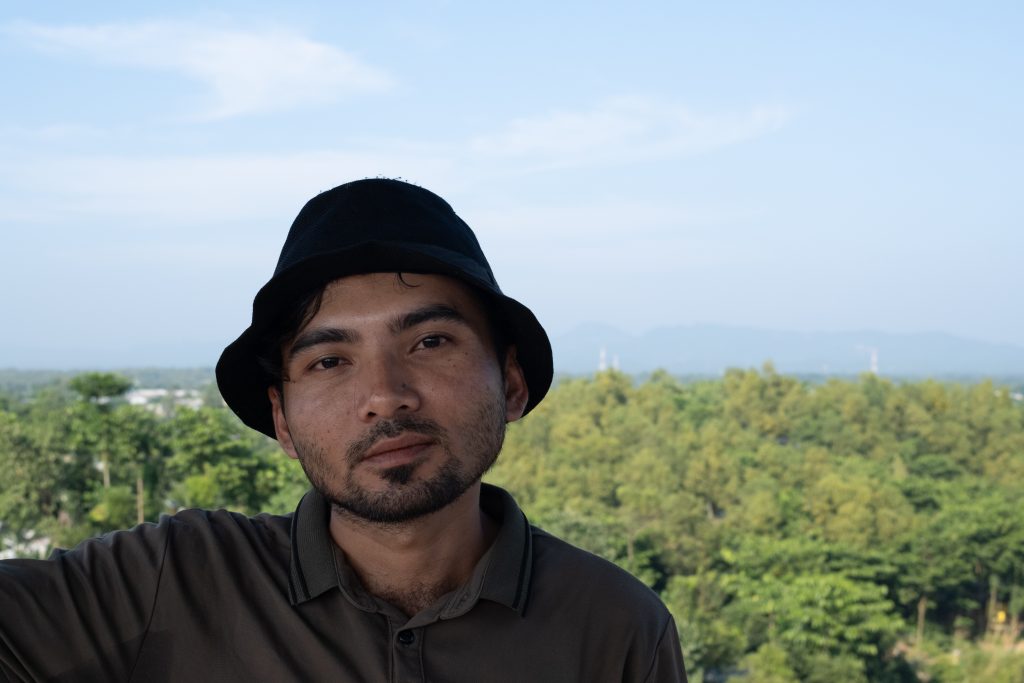
Zia is a photographer, writer, activist and the found of the Rohingyatographer Magazine. After fleeing Myanmar in 2017 due to discrimination against the Rohingya, Zia settled in a Bangladeshi refugee camp, where he initially worked for the Danish Refugee Council and now freelances for NGOs and media.
“This is photography and this is truth telling.”
Sahat Zia Hero
Through his photography, Zia aims to showcase the conditions his people face in the camps, while raising awareness and garnering support for their rights.
“Because of the humanitarian crisis we are facing, our youth are being engaged to the negative activities like human trafficking, smuggling and trafficking and kidnapping. This can only be solved as we overcome the humanitarian crisis.”
The latest issue of Rohingyatographer is centred around food, an integral part of Rohingya culture. Zia highlights that cultural practices and traditions have been difficult to carry on with the conditions in the camp, and that the food culture is already disappearing due to the very limited resources they have.
“We are losing our younger generation.”
Sahat Zia Hero
Zia calls on the Australian people to raise awareness and support the Rohingya people, especially to increase the intake of refugees. For Zia, resettlement would provide hope for younger people in the camps, who have been robbed of a fair go and chance to experience life.
Hasina
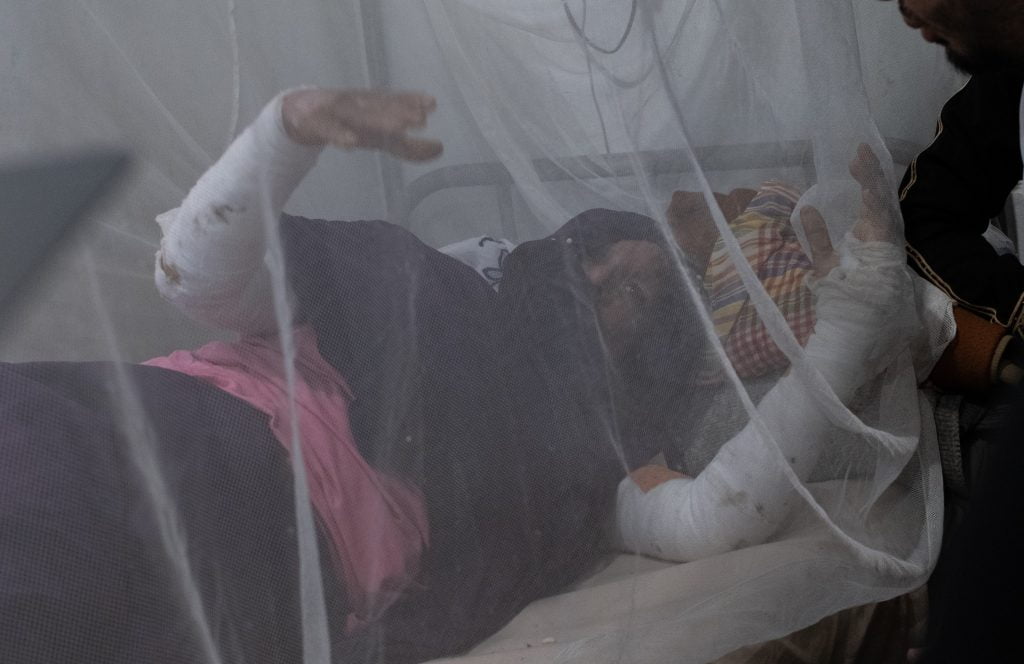
“Please, pray for our survival in this cyclone of ceaseless suffering.
Hasina
Young mother Hasina endured a harrowing ordeal when an LPG gas canister exploded in her tiny hut, setting it on fire. Both she and her husband, who rushed in to save her, were severely burned. They were rushed to the nearest medical facility, but the hospital was overstretched and there were very limited resources. Due to not having a caretaker, Hasina and her husband weren’t able to undergo vital surgery. While Hasina survived, her husband tragically died. Despite her grief and agonising injuries, she proves her resilience daily as she cares for her family.
Mohamed
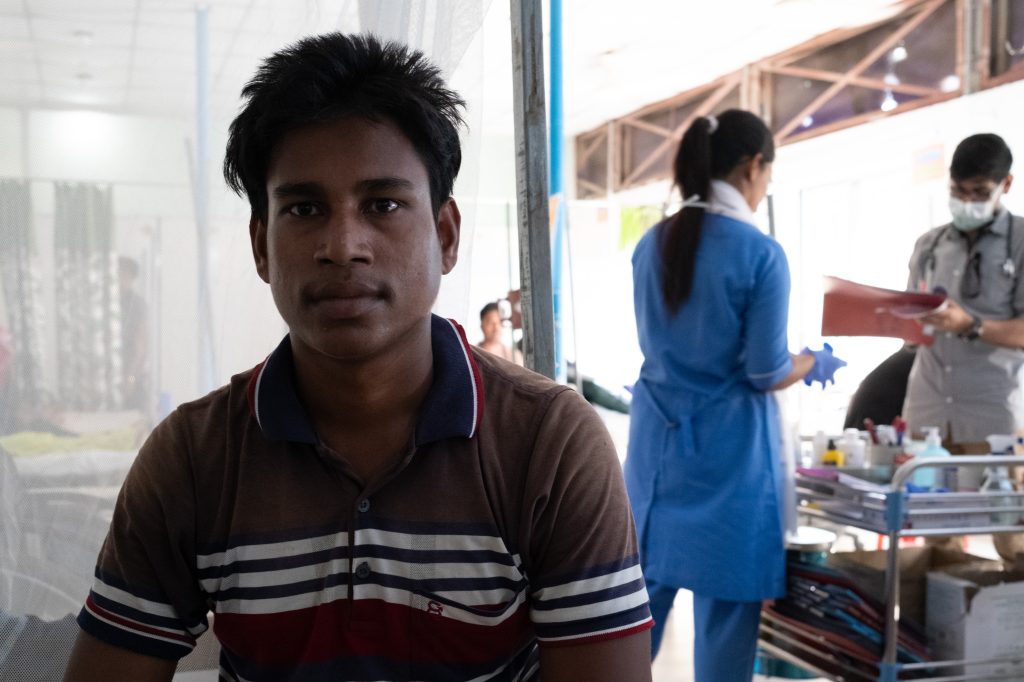
23 year old Mohamed struggles with skin diseases like dengue and eczema, which are spreading like wildfire across the camps. He says that diseases have been spreading rapidly due to waste around the camps, including dengue, eczema, scabies, and other skin diseases.
A future for the Rohingya: what needs to happen
The preferred outcome for the Rohingya is to be able to return to their homes in Myanmar. However, the current regime is being led by the architects of the 2017 ethnic cleansing campaign – the Myanmar Military, who are still denying the Rohingya people their rights and safety.
A lack of accountability for atrocities and sustained military dominance mean that refugees who return would be at extreme risk, due to detention-like conditions and a lack of citizenship.
In their quest for safety, the Rohingya have and continue to embark on dangerous journeys in search for safety and a better life. A lot of refugees embark on precarious boat trips, aiming to find safety in countries like Malaysia, Indonesia and Thailand. The refugees on these trips are exposed to risks of drowning, piracy and abuse by smugglers, who overcrowd them on unsafe vessels.
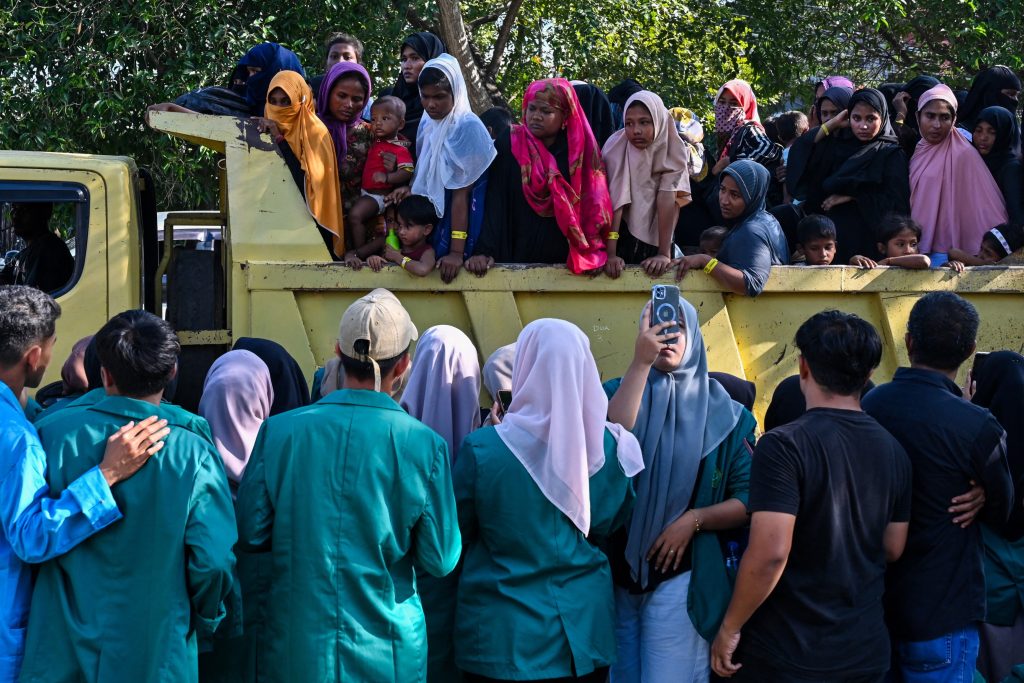
Countries often respond to these refugees with hostility, either pushing the boats back or detaining them in camps where conditions are as bad or even worse than the hardships they fled. They’re denied legal status, just like they are in Myanmar, and aren’t given the right to work, meaning they remain trapped in limbo with no agency over their future.
The international community and Australia must do more to provide safe and legal pathways for the protection and resettlement of Rohingya people.
What the Australian government must do
The Bangladeshi authorities’ recent decision to allow resettlement for vulnerable Rohingya refugees has given us a vital opportunity to provide them with a safe and promising future.
As a major regional leader, Australia has the potential and responsibility to lead the way in establishing a thorough resettlement program for the Rohingya people. We must also advocate for international support. Australia can facilitate long term solutions to ensure education and employment opportunities for the Rohingya people, so they can not just survive, but thrive.
Our recommendations to the Australian government:
- Advocate with the Government of Bangladesh to:
- take greater steps to ensure the safety and dignity of people in refugee camps;
- expand access to education and employment opportunities; and
- ensure that Rohingya refugees aren’t transferred to anywhere they would be at real risk of serious human rights abuses.
- Advocate globally for increased funding for humanitarian needs in the camps and an increase in humanitarian resettlement places for Rohingya people.
- Commit to increasing Australia’s Humanitarian Program to 40,000 places per year (30,000 under the government program and 10,000 under community sponsorship).
- Establish a targeted quota for Rohingya refugees from Myanmar, while taking a lead role in resettling Rohingya refugees out of Bangladesh.
Despite promises to increase the number of places in the Refugee and Humanitarian Program to 27,000, the Albanese government has failed to follow through in this year’s federal budget, with the program remaining with a ceiling of 20,000 places.
What you can do
We must pressure the government to live up to its promise of increasing the Refugee and Humanitarian Program to 27,000 places annually, as well as making an additional 5,000 places available through the Community Sponsorship Program.
